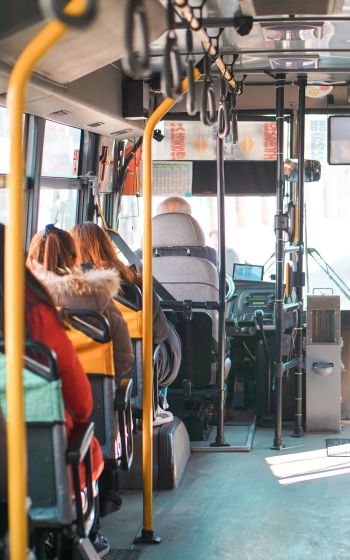Never waste a crisis: how EaP countries governments and cities can capitalise on COVID-19 to improve urban mobility in the long term.
The pandemic has revealed weaknesses in EaP countries’ planning and management of transport systems, especially in cities. Pre-COVID-19 weaknesses, such as a lack of (adequate) bicycle networks or the inadequate service provided by public transport, had a direct impact on EaP cities’ resilience to the challenges created by COVID-19 and highlighted the need to adapt urban transport to global threats.
This paper proposes several recommendations to EaP countries’ governments, cities and municipalities on how to improve urban mobility.
While public transport recorded a ridership decline in 2020, the number of cyclists and users of micro-mobility options, such as electric scooters, has increased despite lack of safe infrastructure.
EaP countries should ride this wave and ensure that the new healthy and sustainable urban mobility habits taken up in 2020, favoured by lockdowns and other pandemic-related concerns, have a solid future beyond the current circumstances.
At the national level, the parliaments and governments of the Eastern Partnership countries are recommended to foresee strategies for future pandemic-like events. Notably, procedures for approvals and construction of transport infrastructure for periods of quarantine should be simplified.
Moreover, governments should set up a proper legal and regulatory framework in which cities can develop their mobility plans, incorporating local sustainability goals in line with national goals and targets. To help public transport companies survive the loss of income due to reduced ridership, governments should provide economic support.
In addition, the development of micro-mobility and non-motorised transport should be supported. This includes establishing national standards and strategies for the design and construction of bicycle infrastructure.
In order to make progress measurable and adjustable, concrete indicators are necessary. Also, ambitious, yet realistic targets are needed which would support evidence-based policy making and a clear assessment of results.
At the local level, Eastern Partnership countries’ cities and municipalities should develop urban mobility plans for cities. They should introduce the position of cycling officers, responsible for the development of cycling infrastructure.
Pedestrian accessibility and barrier-free space needs to be increased to promote independent movement for less mobile groups. Finally, to connect different areas of cities with parks and forests, green corridors from residential areas to business areas should be created.
Available for download
Position paper: Never waste a crisis: how EaP countries governments and cities can capitalise on COVID-19 to improve urban mobility in the long term, 24 June 2021.
